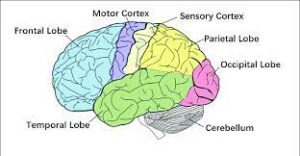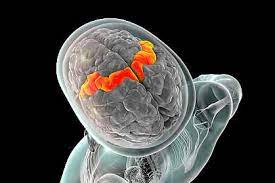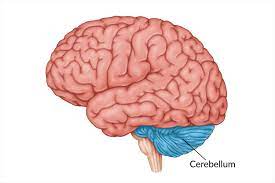Neurological disabilities include a wide range of disorders, such as epilepsy, learning disabilities, neuromuscular disorders, autism, ADD, brain tumors, and cerebral palsy, just to name a few. Some neurological conditions are congenital, emerging before birth.
Today we will cover how the brain is actually affected in cerebral palsy to understand the symptoms that the each patient who is diagnosed with it is going through and each patient is individual with symptoms and the intensity.
Cerebral palsy is generally caused by damage to parts of the brain, specifically, the parts of the brain that control movement. The following types of brain damage can lead to developmental issues, movement problems, and issues with swallowing, hearing, and eye movement. Those areas of the brain dealing with movement are the cerebellum that is responsible for our balance and the motor cortex in the cerebrum.
How the cerebellum works that is affected in Cerebral Palsy-CP:
Maintenance of balance and posture. The cerebellum is important for making postural adjustments in order to maintain balance. Through its input from vestibular receptors and proprioceptors, it modulates commands to motor neurons to compensate for shifts in body position or changes in load upon muscles.
Although the cerebellum accounts for approximately 10% of the brain’s volume, it contains over 50% of the total number of neurons in the brain. Historically, the cerebellum has been considered a motor structure, because cerebellar damage leads to impairments in motor control and posture and because the majority of the cerebellum’s outputs are to parts of the motor system. Motor commands are not initiated in the cerebellum; rather, the cerebellum modifies the motor commands of the descending pathways to make movements more adaptive and accurate. The cerebellum is involved in the following functions:
Maintenance of balance and posture but more function is to it. The cerebellum is important for making postural adjustments in order to maintain balance. Through its input from vestibular receptors and proprioceptors, it modulates commands to motor neurons to compensate for shifts in body position or changes in load upon muscles. Patients with cerebellar damage suffer from balance disorders, and they often develop stereotyped postural strategies to compensate for this problem (e.g., a wide-based stance).
Coordination of voluntary movements. Most movements are composed of a number of different muscle groups acting together in a temporally coordinated fashion. One major function of the cerebellum is to coordinate the timing and force of these different muscle groups to produce fluid limb or body movements.
Motor learning. The cerebellum is important for motor learning. The cerebellum plays a major role in adapting and fine-tuning motor programs to make accurate movements through a trial-and-error process (e.g., learning to hit a baseball).
Cognitive functions. Although the cerebellum is most understood in terms of its contributions to motor control, it is also involved in certain cognitive functions, such as language. Thus, like the basal ganglia, the cerebellum is historically considered as part of the motor system, but its functions extend beyond motor control in ways that are not yet well understood.
How the Motor Cortex works, that is affected in Cerebral Palsy-CP:
The motor cortex is an area within the brain’s cerebral cortex that is involved in the planning, control, and execution of voluntary movements. The motor cortex can be divided into the primary motor cortex and the nonprimary motor cortex.
The primary motor cortex is critical for initiating motor movements. The nonprimary motor cortex, further divided into other areas such as the premotor and supplementary cortex, is involved with planning, initiating, and selecting the correct movement.
Both hemispheres have a motor cortex, with each side controlling muscles on the opposite side of the body (i.e., the left hemisphere controls muscles on the right side of the body).
CP is caused by injuries or abnormalities of the brain.
Most of these problems occur as the baby grows in the womb. But they can happen at any time during the first 2 years of life, while the baby’s brain is still developing.
In some people with cerebral palsy, parts of the brain are injured due to a low level of oxygen (hypoxia) in those areas. It is not known why this occurs.
Premature infants have a slightly higher risk of developing CP.
Cerebral palsy (CP) refers to a group of neurological disorders that appear in infancy or early childhood and permanently affect body movement and muscle coordination. CP is caused by damage to or abnormalities inside the developing brain that disrupt the brain’s ability to control movement and maintain posture and balance. The term cerebral refers to the brain; palsy refers to the loss or impairment of motor function.
Cerebral palsy (CP) is a group of disorders that affect a person’s ability to move and maintain balance and posture. CP is the most common motor disability in childhood. Cerebral means having to do with the brain. Palsy means weakness or problems with using the muscles.
In some cases, the areas of the brain involved in muscle movement do not develop as expected during fetal growth. In others, the damage is a result of injury to the brain either before, during, or after birth. In either case, the damage is not reversible and the disabilities that result are permanent.
Cerebral palsy is a group of disorders that affect movement and muscle tone or posture. It’s caused by damage that occurs to the immature, developing brain, most often before birth.
Signs and symptoms appear during infancy or preschool years. In general, cerebral palsy causes impaired movement associated with exaggerated reflexes, floppiness or spasticity of the limbs and trunk, unusual posture, involuntary movements, unsteady walking, or some combination of these.
People with cerebral palsy can have problems swallowing and commonly have eye muscle imbalance, in which the eyes don’t focus on the same object. They also might have reduced range of motion at various joints of their bodies due to muscle stiffness.
The cause of cerebral palsy and its effect on function vary greatly. Some people with cerebral palsy can walk; others need assistance. Some people have intellectual disabilities, but others do not. Epilepsy, blindness or deafness also might be present. Cerebral palsy is a lifelong disorder. There is no cure, but treatments can help improve function.
CP is the leading cause of childhood disabilities in the U.S., but it doesn’t always cause profound disabilities. Someone with mild CP may not need any assistance or may have slight problems, such as difficulty walking, while a person with severe CP might need special equipment or lifelong care. The disorder isn’t progressive, meaning it doesn’t get worse over time and some symptoms may even change as the child gets older.
There is no cure for cerebral palsy, but supportive treatments, medications, and surgery can help many individuals improve their motor skills and ability to communicate with the world.

 The Motor Cortex
The Motor Cortex